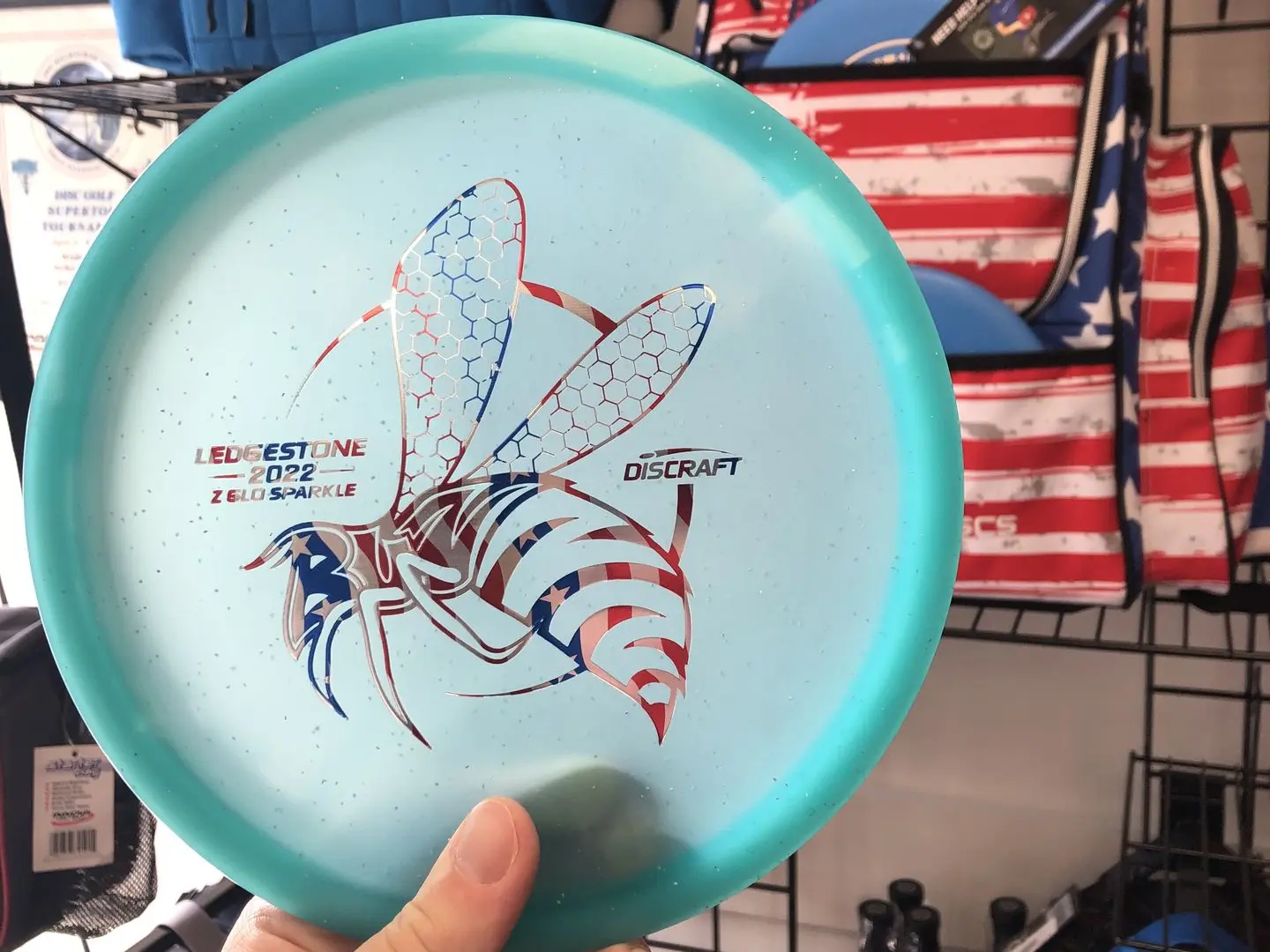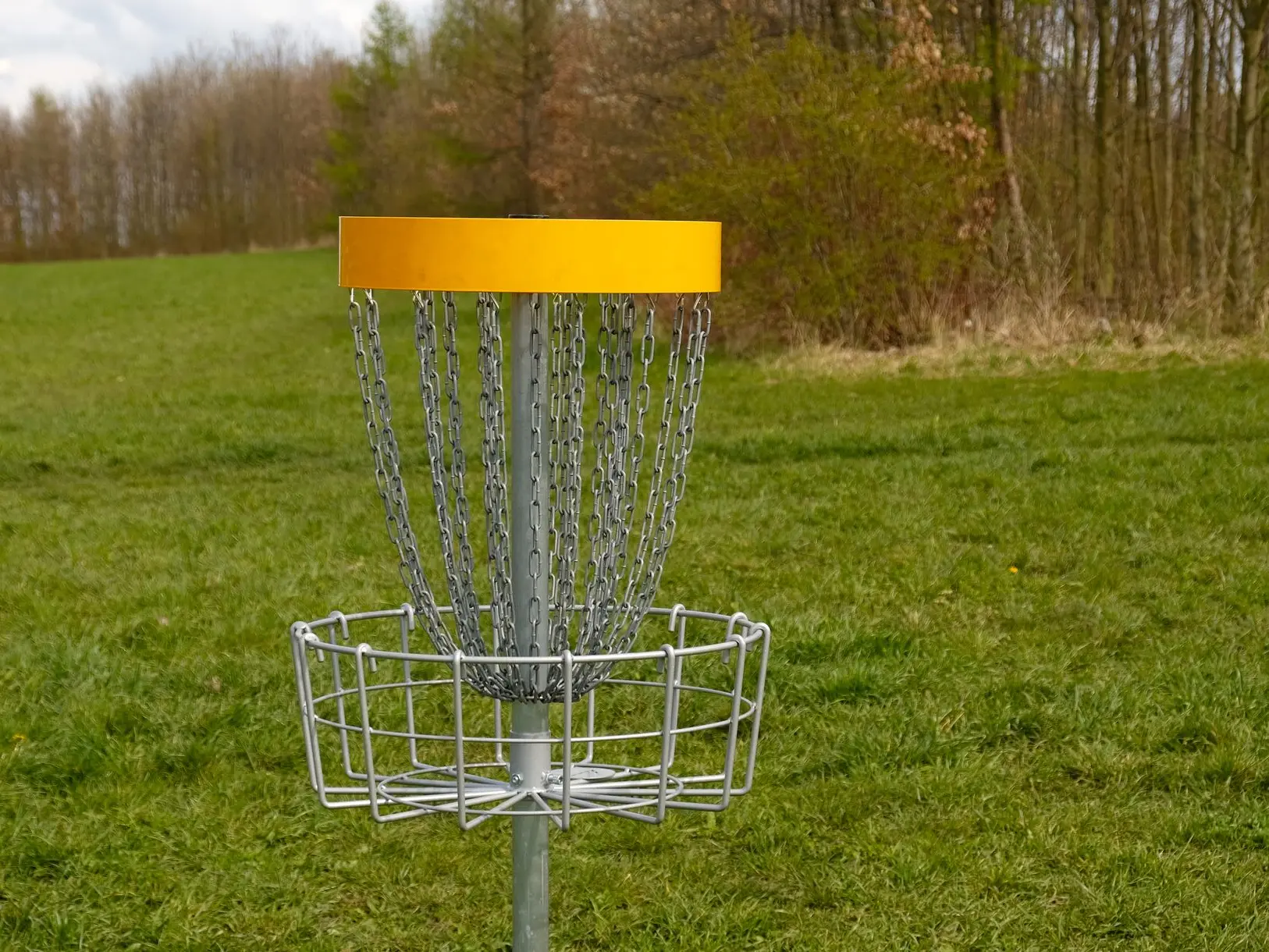Welcome to our ultimate guide to disc golf terms! Whether you're just discovering this exciting sport or looking to brush up on your knowledge, this guide is for you. Let's dive into essential disc golf terminology to get you familiar with the lingo!
Disc Terms

A throw where the disc angles away from the thrower’s arm. For right-handed players, the disc tilts to the right.
The ridge or edge on the bottom of the disc along the rim.
Higher speed disc golf discs designed for distance and usually used for the initial throw from the tee pad.
A disc that has a mid-high speed rating and is commonly used for shorter holes or on the second throw.
The numeric rating system on most disc golf discs categorized by: Speed, Glide, Turn, and Fade.
A throw where the disc angles towards the thrower’s arm. For right-handed players, the disc tilts to the left. Also refers to the natural curve of the disc flight in that direction.
The mini disc used to mark a lie.
These discs tend to have slower speeds than drivers and thinner rims and are meant for shorter or approach shots.
Refers to a disc's tendency to turn towards the thrower's opposite side (left for a right-handed backhand throw) due to its design. Overstable discs are reliable in windy conditions and for making hyzer shots.
These discs are slower than midrange discs and are used for short approach shots or to target the basket.
A disc that flies straight with minimal turn when thrown at the appropriate speed.
A disc is described as understable when it tends to turn in the direction of the throw (right for a right-handed thrower) during the high-speed portion of its flight. These discs are often used for long, turning shots and for players with lower arm speeds.
Game Terms

Hitting the basket in one throw; a hole-in-one.
When a player completes a hole three under par, also known as a double eagle.
The target in disc golf, consisting of a metal pole, chains, and a basket where the disc is meant to land.
Scoring one throw over par.
Scoring one throw under par.
Refers to the 10-meter circle around the basket on each hole.
A contest where the winner is the person whose disc lands closest to the basket, usually after the first throw or drive.
A designated throwing area if the prior throw missed a mando or goes out of bounds.
Usually refers to the scorecard kept during a round of play. May also refer to the players that start on the same hole during a tournament.
Scoring two throws under par.
A violation of PDGA rules that stipulate where a foot may be placed when throwing.
Another term for Disc Golf or Frisbee Golf. Combines "Frisbee" and "Golf".
A tree, bush, or other obstacle that makes it difficult to reach the basket.
A sudden change of direction when a disc hits an object.
The spot where a disc comes to rest after a throw.
A predetermined direction in which the disc must travel. Missing a mando may result in a penalty stroke.
The area outside of the course playing area. Discs landing OB result in a penalty stroke.
The expected number of throws it will take to complete a hole from the tee pad to the basket.
The designated area where players start and make their first throw for each hole.
Throwing Terms

A controlled throw made with the intention of placing the disc close to the basket, setting up an easy putt, rather than aiming directly for the basket.
A common throwing technique where the disc is pulled across the body and released with the arm extending towards the target. Sometimes abbreviated as RHBH or LHBH (right hand backhand or left hand backhand).
When the disc hits the chains but bounces out of the basket instead of settling into it.
The first throw from the tee pad, aiming to cover as much distance as possible.
A throw designed to navigate out of a tricky situation, such as being surrounded by trees, to get back onto the fairway.
The last number on the common disc flight rating system on most disc golf discs. Fade refers to how far the disc drifts as it slows down towards the end of its flight.
A throw that starts with an anhyzer angle but then "flexes" back to a hyzer flight path due to the disc's stability, often used to navigate around obstacles.
A throwing technique where the disc is held on the side of the body and released with a flick of the wrist. Also known as a forehand throw.
The second number of the common numeric disc flight rating system. This refers to a disc's ability to maintain loft during flight.
A term referring to a throw that was released later than the thrower anticipated.
A short and controlled throw aimed at getting the disc into the basket, usually within the circle (within 10 meters of the target). Also refers to the disc used for such throws.
A throw designed to make the disc roll on the ground for a significant portion of its flight.
The first number of the disc numeric rating system. This refers to the relative speed a disc must be thrown to achieve its intended flight.
A throwing style where the disc is thrown overhand, similar to a baseball pitch, causing it to spin vertically and follow an overhand flight path.
The third number of the numeric flight rating system. This refers to how far the disc drifts to the right (RHBH throw) during the first part of its flight.
Still have questions about disc golf terms? Contact us or stop by our store so one of our knowledgable staff members can help!